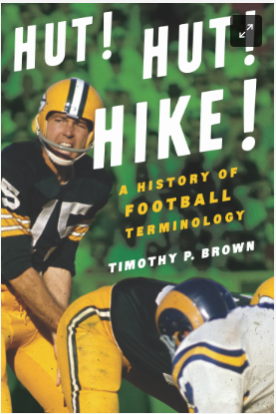Gary Carter Catcher for the Ages
Baseball purists revere him, and fans remember the thunder of his bat. Gary Carter, nicknamed "The Kid" for his youthful exuberance throughout his long career, was a cornerstone catcher not just for the New York Mets, but for the entire game. This article delves into the life and legacy of this iconic figure, exploring his defensive mastery, clutch hitting, and the impact he left on the sport he loved.
A great YouTube video of Gary Carter's MLB highlights. Born April 8, 1954, in Culver City, CA, was Baseball Hall of Fame catcher Gary Carter.
Gary Carter besides Catcher played a bit of Right Field, First Base, Left Field, and Third Base, wearing the number 8 on the Montreal Expos (1975-84 and 1992), New York Mets (1985-89), San Francisco Giants (1990), and Los Angeles Dodgers (1991) for 18 seasons as he batted 0.262 for his career, had an On Base percentage of 0.439, with 324 career Home Runs, and 3 Gold Glove Awarded Seasons.
He is one of the top MLB players that ever wore the Number 8 Jersey.
Didier Pitre Hockey's Cannonball
Nicknamed "Cannonball," he was renowned for having one of the hardest shots during his playing career.
Pitre was born in Salaberry-de-Valleyfield, Quebec, Canada. He began his hockey career in the Quebec Hockey Association in 1908. In 1910, he joined the Montreal Canadiens of the National Hockey Association (NHA). He played for the Canadiens for seven seasons, helping them win the Stanley Cup in 1916 and 1924.
In 1913, Pitre briefly played for the Vancouver Millionaires of the Pacific Coast Hockey Association (PCHA). He returned to the Canadiens in 1914 and remained with the team until 1923.
Pitre was a versatile player who could play both offense and defense. He was known for his hard shot and his speed. He was also a skilled stickhandler and passer.
Pitre retired from hockey in 1923. He was inducted into the Hockey Hall of Fame in 1962.
Here are some of Pitre's career highlights:
Stanley Cup champion (1916, 1924)
NHA First All-Star Team (1913, 1914)
NHL Second All-Star Team (1922)
NHL Top Scorer (1922)
Inducted into the Hockey Hall of Fame (1962)
The Legacy of Vladimir Guerrero
Guerrero's professional career began in his native Dominican Republic before he signed with the Montreal Expos in 1993. His MLB debut in 1994 showcased his immense potential, and by 1997, he established himself as a force to be reckoned with. His swing, a violent yet graceful combination of power and precision, launched towering home runs, earning him eight Silver Slugger awards and the 2004 AL MVP trophy.
Beyond his hitting prowess, Guerrero's defense in right field was equally impressive. His acrobatic catches and laser throws made him a highlight reel magnet and earned him five Gold Glove awards. His fiery spirit and hustle were contagious, inspiring his teammates and electrifying the crowd.
After a decade with the Expos, Guerrero embarked on new chapters with the Anaheim Angels and the Texas Rangers, continuing to display his power and leadership. Throughout his career, he amassed 449 home runs, 1496 RBIs, and a lifetime batting average of .318, solidifying his place among baseball's elite.
However, Guerrero's legacy extends beyond statistics. He was a fan favorite, beloved for his genuine personality, infectious smile, and visible passion for the game. He embraced his fans, particularly those from his Dominican homeland, inspiring countless young players and embodying the spirit of the sport.
In 2018, Vladimir Guerrero earned his rightful place in Cooperstown, joining the Baseball Hall of Fame.
Guy Carbonneau Defensive Stalwart and Champion Maker
Early Career and Defensive Prowess (1979-1990):
Drafted by the Montreal Canadiens in 1979, Carbonneau quickly established himself as a reliable two-way center. While not known for putting up huge point totals, his defensive awareness, physicality, and ability to shut down opposing teams' top lines were invaluable. He won the Frank J. Selke Trophy, awarded to the league's best defensive forward, an impressive three times (1987-1988, 1988-1989, 1991-1992).
Stanley Cup Victories and Captaincy (1986-1994):
Carbonneau's contributions were instrumental in the Canadiens' success. He was a key member of the team that captured the Stanley Cup in 1986, playing a crucial role in shutting down Wayne Gretzky, the league's most dominant offensive force at the time.
In 1989, Carbonneau was named captain of the Canadiens, a testament to his leadership and work ethic. He led the team to another Stanley Cup victory in 1993, showcasing his ability to elevate his teammates' performance.
Later Career and Coaching Success (1994-2005):
Seeking a new challenge, Carbonneau left the Canadiens after the 1994 season. He played for several teams over the next six years, showcasing his veteran leadership and defensive prowess. He retired from playing in 2000, leaving behind a legacy of excellence.
Carbonneau's transition to coaching proved seamless. He led the Montreal Canadiens from 2006 to 2009, implementing a defensive system that mirrored his playing style. He is credited with fostering the development of young players like Patrice Bergeron and David Krejci, who became stars in their own right.
Guy was joined the Montreal Canadiens, after they drafted him in the 3rd round (44th overall), of the 1979 NHL Entry Draft. He scored 260 career goals in his time int he NHL and was selected to enter the Hockey Hall of Fame in 2019 as he was a three time winner of the Frank J Selke Award and played on three Stanley Cup Champion teams.
Pedro Martinez
This legend was an eight-time MLB All-Star, helped the Red Sox win the World Series in 2004. Also to his credit are the Cy Young Award 1997, 99, 2000, and the Triple Crown 1999.
Martinez played with the Montreal Expos and the Boston Red Sox.
Andre Dawson "The Hawk" Soars High in Baseball History
Andre Dawson, nicknamed "The Hawk" and "Awesome Dawson," was an American baseball outfielder who left an indelible mark on the game throughout his 21-year career. Known for his exceptional hitting power, defensive prowess, and fierce competitiveness, Dawson carved a path to the National Baseball Hall of Fame in 2010.
Early Life and Career Beginnings:
Born in Miami, Florida, in 1954, Dawson's talent was evident early on. Drafted by the Montreal Expos in 1975, he quickly rose through the minor leagues, showcasing his power-hitting potential. He made his major league debut in 1976 and quickly established himself as a force to be reckoned with.
A Forceful Hitter and Defender:
-Dawson's offensive prowess was undeniable. He finished his career with a .279 batting average, 438 home runs, and 1,591 RBIs, earning four Silver Slugger awards. He was also a master of hitting to all fields, consistently exceeding 200 hits in a season several times.
-Beyond his hitting, Dawson was also a defensive stalwart. He won eight Gold Glove Awards, showcasing exceptional range and a strong throwing arm in the outfield. His defensive contributions were essential to his teams' success throughout his career.
Career Highlights and Legacy:
Dawson spent his prime years with the Montreal Expos, leading them to several postseason appearances. He was also an eight-time All-Star and won the National League Rookie of the Year award in 1977. Later in his career, he played for the Chicago Cubs, Florida Marlins, and Boston Red Sox, adding further accolades and solidifying his reputation as a well-rounded player.
Andre Dawson was a great batter and fielder for the Montreal Expos, Chicago Cubs, Boston Red Sox, and Florida Marlins.
Dick Duff Hockey Star Left Winger
Early Career and Rising Star (1955-1964):
-Duff began his professional career with the Toronto Maple Leafs in 1955. Despite his size, he possessed exceptional speed, agility, and a knack for finding the net.
-He quickly established himself as a valuable two-way forward, contributing both offensively and defensively. His tireless work ethic and ability to play in all situations earned him the respect of teammates and coaches alike.
Stanley Cup Success and a Blockbuster Trade (1964-1969):
-Duff's impact became undeniable as he played a key role in the Maple Leafs' back-to-back Stanley Cup victories in 1962 and 1963. His offensive production soared, and he was named an All-Star on multiple occasions.
-In a surprising move in 1964, Duff was part of a blockbuster trade that sent him, along with several other Maple Leafs stars, to the Montreal Canadiens. This move proved fruitful for both player and team. Duff seamlessly integrated into the Canadiens' high-powered offense, playing alongside legends like Jean Béliveau and Maurice Richard. He added another Stanley Cup championship to his resume in 1965 and continued to be a reliable offensive contributor for the Canadiens, winning two more Stanley Cups in 1966 and 1968.
Later Career and Legacy (1969-1971):
After a successful stint with the Canadiens, Duff bounced around the NHL, playing for the Los Angeles Kings, Buffalo Sabres, and briefly returning to the Maple Leafs. While his offensive production dipped slightly in his later years, his veteran leadership and work ethic remained valuable assets. He retired in 1971 with a respectable 572 points (283 goals and 289 assists) in 1030 regular-season games, solidifying his place as a consistent scorer throughout his career.
Born February 18, 1936, in Kirkland Lake, Ontario, was Hockey Hall of Fame Left Wing Dick Duff. This legend was a six-time Stanley Cup winner. He skated with the Toronto Maple Leafs, New York Rangers, Buffalo Sabres, Montreal Canadiens, and Los Angeles Kings.
Babe Siebert Hockey Hall of Fame S-Line Member
His journey began in Flatbush, Brooklyn, where he carved his name on local rinks before migrating to the Montreal Maroons in 1925. Here, his talent blossomed. A powerful forward with a scoring touch, he helped the Maroons capture the Stanley Cup in his rookie season, becoming a fan favorite known for his rugged play and electrifying rushes.
Siebert wasn't just a gifted goal scorer; he was a tough-as-nails enforcer often suspended for his on-ice brawls. This duality became his trademark, earning him the fear, respect, and discipline. He thrived in the rough-and-tumble hockey of the era, but his physicality often overshadowed his skill.
His career took a surprising turn in 1933 when he was traded to the Boston Bruins. There, coach Art Ross saw hidden potential, converting Siebert into a defenseman. This move unlocked a new level of greatness. His physicality translated seamlessly to the back line, making him a dominant force against opposing forwards.
He blossomed as a blueliner, earning All-Star nods and leading the Bruins to another Stanley Cup in 1939. In 1937, he even received the Hart Trophy as the league's Most Valuable Player, a testament to his newfound defensive prowess.
But the shadow of his past still loomed. Injuries and off-ice issues plagued his later years, and he tragically drowned in 1939 on the eve of his first season as head coach of the Montreal Canadiens.
Babe Siebert remains a controversial figure in hockey history. Undeniably talented, he was also fiercely temperamental and often crossed the line with his physicality. He was a man of contradictions, a champion on the ice but troubled off it.





.jpg?https://jerseydispatch.com/pfeL/p/c312642c0431e75b485e432232c99c1c/website/Sports-History-Photo-of-the-Day/February-Images/February-4-Image/images/.Strathconas_First_Hockey_Team_(21879505322).jpg)




